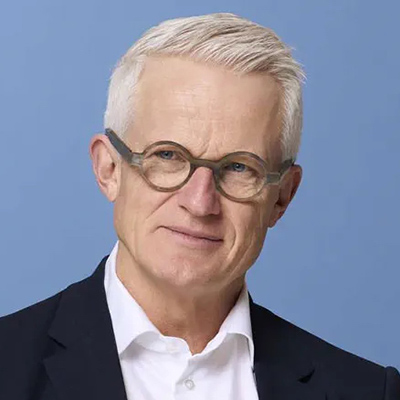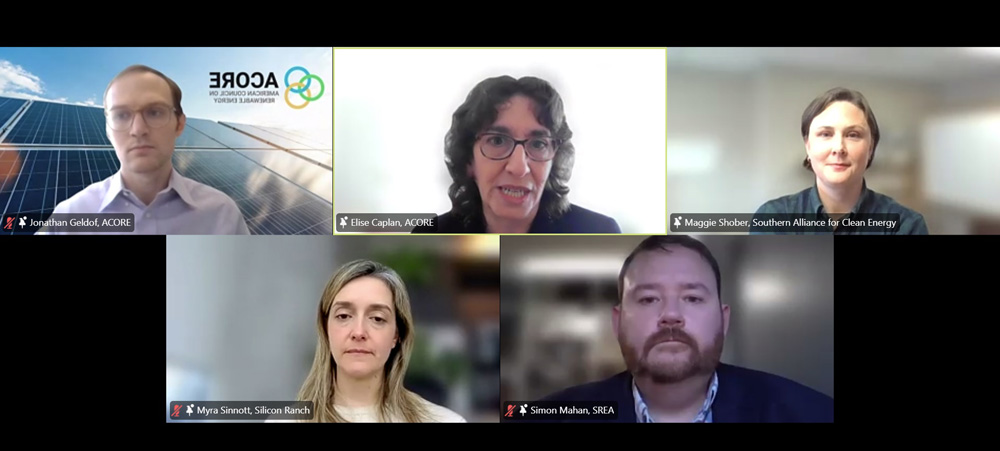D.C. District Court Judge Loren AliKhan on Feb. 3 issued a temporary restraining order on the White House’s Office and Management and Budget from pausing all federal grants and loans, including those committed by agencies through the Inflation Reduction Act and the Infrastructure Investment and Jobs Act.
The Trump administration’s “actions appear to suffer from infirmities of a constitutional magnitude,” AliKhan wrote. “The appropriation of the government’s resources is reserved for Congress, not the Executive Branch. …
“Defendants’ actions in this case potentially run roughshod over a ‘bulwark of the Constitution’ by interfering with Congress’ appropriation of federal funds. OMB ordered a nationwide freeze on pre-existing financial commitments without considering any of the specifics of the individual loans, grants or funds. It did not indicate when that freeze would end (if it was to end at all). And it attempted to wrest the power of the purse away from the only branch of government entitled to wield it.”
The memo from OMB, issued Jan. 27, called for a review of all funding and stated that “federal agencies must temporarily pause all activities related to obligation or disbursement of all federal financial assistance, and other relevant agency activities.”
This briefly threw the federal bureaucracy into chaos, as it was unclear what exactly it applied to; state-level officials and U.S. representatives reported that constituents complained about not being to access Medicare and Medicaid.
White House spokesperson Karoline Leavitt later clarified to reporters that the memo did not apply to individual, direct assistance but rather “funding for the Green New Scam that has cost American taxpayers tens of billions of dollars. It means no more funding for transgenderism and wokeness across our federal bureaucracy and agencies. No more funding for Green New Deal social engineering policies.”
OMB rescinded the memo on Jan. 29 following a temporary injunction, issued by AliKhan just before it was due to take effect. But Leavitt said that while the administration had rescinded the memo to comply with the injunction, agencies would continue their efforts to review and possibly claw back funds not in line with the executive orders President Donald Trump issued on his first day in office, including his order on Unleashing American Energy. (See Trump Will Need More than Executive Orders for US to Meet Rising Power Demand.)
That threw many programs funded by the IRA and IIJA into limbo.
The Maryland Clean Energy Center was awarded $62 million from the IRA for the state’s Solar for All program, created primarily to deploy community solar projects to help cut utility bills for low-income and disadvantaged communities. Maryland’s grant was one of 49 state-level awards that EPA announced in April 2024.
Responding to RTO Insider on Jan. 31, EPA declined to identify any specific programs but stated that “the agency has paused all funding actions related to the Inflation Reduction Act and the Infrastructure Investment and Jobs Act at this time.”
“As evidenced by the White House press secretary’s statements, OMB and the various agencies it communicates with appear committed to restricting federal funding,” AliKhan wrote in her order. “If defendants retracted the memorandum in name only while continuing to execute its directives, it is far from ‘absolutely clear’ that the conduct is gone for good.”
The case before AliKhan was brought by several groups, led by the National Council of Nonprofits. The judge noted that “plaintiffs have provided evidence that the scope of frozen funds appears to extend far beyond the reach of the executive orders.”
“As just one example, a health center that provides medical, dental and behavioral health services to a rural community was denied access to grant funds,” she wrote. “None of the seven executive orders listed in [the OMB memo] would seem to cover such activity. At oral argument, when asked about another declarant who was receiving a grant from the National Science Foundation, defendants could not give a clear answer as to why that recipient would be denied funds pursuant to the executive orders.”
Solar, EV Chargers, Rural Renewables
Solar for All is not the only IRA-funded program on pause at MCEC. According to a spokesperson, three other program awards have been put on hold.
The center was named for a $15 million award from the IIJA-funded Charging and Fueling Infrastructure program, with the money going to install 58 EV charging stations statewide, along with workforce development efforts.
CFI is administered through the Department of Transportation and the Joint Office of Energy and Transportation. The pause means the planned charger deployment and workforce development will be on hold.
MCEC also is receiving federal funds to provide technical assistance for the Rural Energy for America Program, which provides loans and grant funding to farmers and rural small businesses to install renewable energy systems or energy-efficiency equipment and upgrades.
REAP is a Department of Agriculture program. The funding pause means potential applicants cannot get the help they need to meet the requirements for applying for REAP dollars.
The Solar for All program still is in the planning stages, the spokesperson said. But without the IRA dollars, MCEC will not be able to find state funding to move ahead and reach its program goals, which include providing lower electric bills to 10,000 Marylanders.
MCEC and other Solar for All awardees have reported they have not been able to access the program portal to submit specific funding requests.
Neither USDA nor DOE responded to repeated queries from RTO Insider on whether they have instituted a funding pause.
MISO and SPP were awarded $464 million from DOE’s Grid Resilience and Innovation Partnerships program in support of five projects in the RTOs’ Joint Targeted Interconnection Queue. GRIP is a $10.5 billion IIJA program aimed at expanding and upgrading the U.S. transmission system.
In response to a query from RTO Insider, MISO replied only that it is “continuing to coordinate with the project partners on meeting the grant award requirements.”
The MISO-SPP award was one of 58 projects that received $3.46 billion in GRIP dollars in October 2023. (See DOE Announces $3.46B for Grid Resilience, Improvement Projects.)
DOE’s Office of Clean Energy Demonstrations has canceled an in-person community meeting to discuss potential environmental impacts of the Appalachian Hydrogen Hub, one of seven regional hydrogen hubs funded with $7 billion from the IIJA.
The meeting was scheduled for Feb. 5 in Washington, Pa. In the email announcement, no reason was given for the cancellation, nor was information included on a potential rescheduling.



